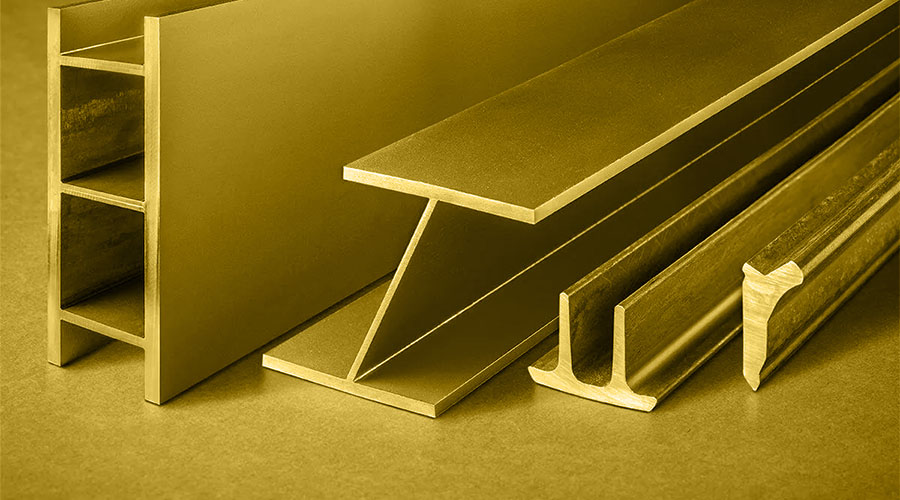Sections and profiles are standard shapes and sizes used in construction and manufacturing. They are typically made from metals like steel, aluminum, or brass and come in various forms to meet different engineering and architectural needs.
1. I-Beams (Universal Beams)
- Description: An I-beam, also known as a universal beam, has an "I" or "H" shape. It is designed to support heavy loads while minimizing weight. The vertical section (web) resists shear forces, while the horizontal sections (flanges) resist bending.
- Applications: Used in construction for structural support in buildings, bridges, and other large structures.
2. Channels (C-Channels)
- Description: Channels have a "C" shape with a vertical web and two horizontal flanges. They are used for structural support, framing, and as tracks.
- Applications: Common in construction, automotive, and industrial applications where moderate strength is needed.
3. Angles (L-Shapes)
- Description: Angles have an "L" shape, with two perpendicular legs. They are used in various structural and framing applications.
- Applications: Ideal for braces, frames, and supports in construction and manufacturing.
4. T-Beams
- Description: T-beams have a "T" shape with a flange at the top and a web extending downward. They provide excellent resistance to bending and are used in both vertical and horizontal applications.
- Applications: Utilized in reinforced concrete structures, such as floors and bridges.
5. Rectangular and Square Tubes
- Description: These profiles are hollow with a rectangular or square cross-section. They offer strength and rigidity while being lightweight.
- Applications: Used in structural applications, furniture, and as framing members.
6. Round Tubes
- Description: Round tubes have a circular cross-section and are commonly used for applications requiring rounded shapes.
- Applications: Found in piping, structural supports, and handrails.
7. Flat Bars
- Description: Flat bars are long, flat pieces of metal with uniform thickness. They are versatile and can be used in a variety of structural and manufacturing applications.
- Applications: Used in frames, brackets, and various other structural components.
8. Angles (Equal and Unequal)
- Description: Equal angles have legs of the same length, while unequal angles have legs of different lengths. They are used for structural reinforcements and support.
- Applications: Common in structural steel work and frames.
Equivalent Specifications
| Profile Type |
Equivalent Specifications |
| I-Beams |
ISO: IPE, IPN
UNS: Not specific
EN: HEA, HEB, HEM
BS: Universal Beam
JIS: I-beam
IS: IS 2062 |
| Channels |
ISO: UPN, UPE
UNS: Not specific
EN: UPN
BS: Channel
JIS: C-channel
IS: IS 808 |
| Angles |
ISO: L-shape
UNS: Not specific
EN: L-shape
BS: Angle
JIS: L-angle
IS: IS 808 |
| T-Beams |
ISO: Not specific
UNS: Not specific
EN: Not specific
BS: Not specific
JIS: Not specific
IS: Not specific |
| Rectangular Tubes |
ISO: Not specific
UNS: Not specific
EN: Not specific
BS: Rectangular Tube
JIS: Not specific
IS: Not specific |
| Round Tubes |
ISO: Not specific
UNS: Not specific
EN: Not specific
BS: Round Tube
JIS: Not specific
IS: Not specific |
| Flat Bars |
ISO: Not specific
UNS: Not specific
EN: Not specific
BS: Flat Bar
JIS: Not specific
IS: Not specific |
The specifications listed might vary based on regional standards and specific requirements. Always check with local standards and codes for precise requirements.
